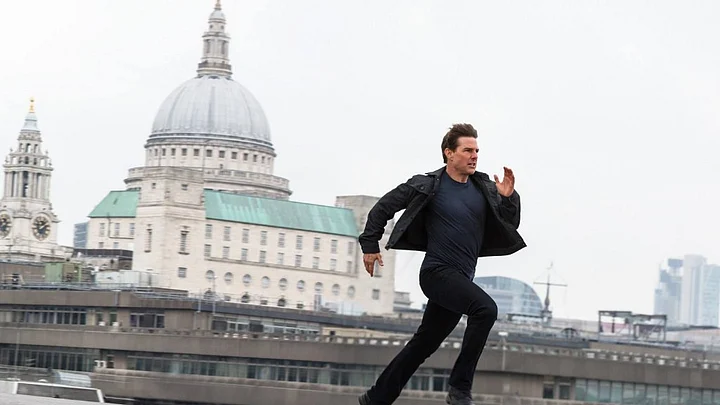A few months ago, while writing a few words on Avengers: Infinity War, I found myself at a loss of words. I was mentioning the cinematography and blocking in a scene where there were no actors, no sets and for all intents and purposes, no traditional camera was used. Does conventional criticism even work for a film like this? Do the rules of action filmmaking even apply?
Before Marvel’s earth-shattering blockbuster, I saw the trailer for Mission: Impossible – Fallout. It felt exciting and refreshing in a way I couldn’t quite pin down. While the series has long been a summer staple, it doesn’t fit among the likes of Ant Man and The Wasp, Jurassic World: Fallen Kingdom and Solo: A Star Wars Story.
Fallout is set in the real world. There is a visible lack of special effects. There is a loving focus on old-school action: not portals in the sky, mass destruction or mountains of pixels. The M:I series is an anomaly for a lot of reasons. It has been running for 22 years with the same leading man. It remains both financially and critically successful. Its entries increasingly defy the cinematic trends of the era they are released in. Most importantly it is the only series that insists on real people doing real things in real locations.
When Ethan Hunt dangles on a wire from the 130th floor of the Burj Khalifa or falls at 200 mph to complete a skydiving scene that required 106 takes, you fear for his life. The scene feels tactile because Tom Cruise is actually doing what you see him doing, even if you haven’t seen any of the behind-the-scenes videos.
For the Marvel films, the action is built into the template. You expect a big fight at certain points in the film, so it’s there. Set-pieces existed before the MCU but Marvel polished them into a smooth running automaton. All of the Marvel films extensively use previz: long sequences of the film are digitally animated in full and simply need a face to be filled in the right places. These sequences are approved even before a director and actors have signed up; which means that the action stays more or less the same.
Increasingly Marvel has trained its audience to zone out during the set pieces, only paying attention when their favourite character says something cool. There is an air of hollowness around everything. Even the memorable airport sequence in Captain America: Civil War was almost entirely shot on a green screen, despite having the very real Berlin airport as a backdrop. The Mission: Impossible series meanwhile, is all about devising elaborate ways to send Tom Cruise to his death.
Cruise and Fallout director Christopher McQuarrie have spoken at length about how each new instalment is built around conjuring more creative and original stunts. The follow-ups are constantly trying to one-up the previous entries. The mad genius behind these stunts cannot be appreciated enough.
The Mission: Impossible series is also an exemplar of good direction. Between McQuarrie and Ghost Protocol -director Brad Bird, the franchise has had a near perfect run. (Bird is known for the fantastic Incredibles films, which defy the convention that CGI doesn’t need to adhere to real world filmmaking.) The last three films make for a masterclass in shooting action - everything from framing and blocking to perfect editing that ratchets up the tension in a way that Hitchcock would be proud.
It might look like I’m unfairly targeting Marvel here, but with 20 films in 10 years the MCU has redefined success. This has lead to every major studio and franchise wanting to replicate its formula, blemishes and all. Add to that, action filmmaking is rarely looked at through a critical lens. When mass-market films work towards making action disposable, it becomes easier to disregard action in films, if not the genre entirely.
This is the reason there is no modern franchise that is doing what the Mission: Impossible films are. Spectre was an unremarkable mess and James Bond may be on the verge of becoming irrelevant. The two Bourne reboots have been a disaster. The Fast & Furious series peaked late and has fizzled out. Only the John Wick films come close in their reverence to action filmmaking but not in scale or success. The brilliance of Mission: Impossible - Fallout proves that getting ahead of the curve is better than going with the flow.
(At The Quint, we question everything. Play an active role in shaping our journalism by becoming a member today.)
